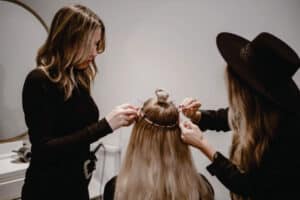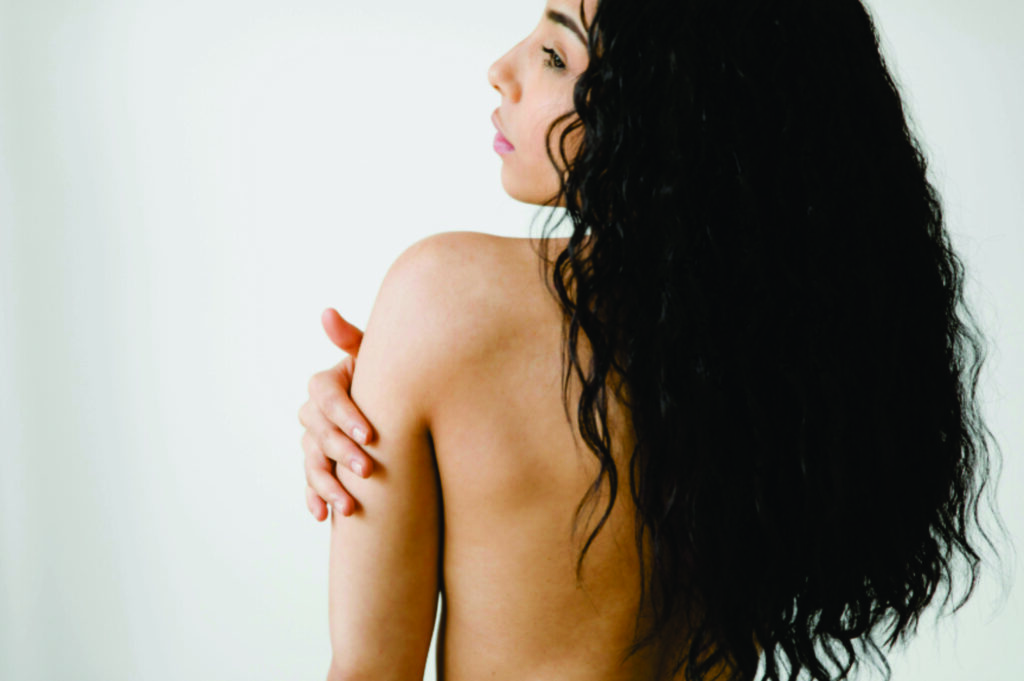Hair extensions provide a fantastic way to instantly transform your hairstyle by adding length, volume, and versatility. However, selecting the right type of extensions and following the best hair extensions and care practices is crucial for achieving long-lasting results. Types, Features, and Care Tips of Hair Extensions are essential for individuals considering temporary or long-term extensions. By choosing the right application method and maintaining proper hair care, you can ensure your extensions remain flawless and natural-looking.

Types of Hair Extensions
There are numerous hair extension methods, each with specific benefits and potential drawbacks. Selecting the right option depends on your hair type, lifestyle, and the level of maintenance you’re willing to commit to.
Clip-In Extensions
Clip-in extensions are one of the easiest ways to add volume and length instantly. They consist of hair wefts with small clips attached, allowing for quick installation and removal.
Pros:
- Easy to attach and remove without professional assistance.
- Ideal for occasional use or special events.
- No damage to natural hair when used properly.
Cons:
- Not suitable for long-term wear.
- May feel heavy if applied incorrectly.
- Require proper care and storage to maintain quality.
Tape-In Extensions
Tape-in extensions are semi-permanent and involve hair strands attached to adhesive tapes that bond to natural hair.
Pros:
- Lasts between 4-8 weeks when maintained properly.
- Blends naturally with existing hair.
- Causes minimal damage compared to some permanent extension methods.
Cons:
- Requires professional application and removal.
- Cannot be washed or styled aggressively near the tape bonds.
- Needs regular adjustments as natural hair grows.
Sew-In (Weave) Extensions
Sew-in extensions, or weaves, are applied by braiding natural hair tightly and sewing extensions onto the braids with a needle and thread.
Pros:
- Provides a long-lasting result (6-8 weeks).
- Works well for thick and coarse hair.
- Does not require heat or glue, reducing damage.
Cons:
- Needs professional installation.
- Tight braiding may cause discomfort or scalp tension.
- Not ideal for thin or fragile hair due to weight.
Keratin Bond Extensions
Keratin bond extensions involve attaching small strands of hair using a keratin-based adhesive, which is fused to natural hair with heat. 
Pros:
- Long-lasting (3-6 months).
- Provides a seamless and natural look.
- Requires minimal daily maintenance after application.
Cons:
- Needs professional installation and removal.
- Heat-based application may weaken natural hair.
- Higher cost compared to other methods.
Micro Link (Bead) Extensions
Micro link extensions use tiny metal beads to attach hair extensions to small sections of natural hair.
Pros:
- No glue or heat is required.
- Can be adjusted and reused multiple times.
- Offers a natural appearance and movement.
Cons:
- Needs professional application and periodic adjustments.
- Beads can slip over time and require tightening.
- May cause breakage if applied too tightly.
Features of Hair Extensions
Natural vs. Synthetic Hair
- Natural Hair Extensions – Made from real human hair, these extensions blend naturally, can be styled with heat tools, and last longer with proper care.
- Synthetic Hair Extensions – Created from artificial fibers, synthetic extensions are more affordable but cannot withstand heat styling and tend to have a shorter lifespan.
Hair Texture and Color Matching
Selecting the right texture and color is crucial for achieving a seamless look. Most brands offer various textures, including straight, wavy, and curly options, to match different hair types. Some natural hair extensions can also be dyed for a perfect color match.
Longevity of Different Extensions
- Clip-ins: 6-12 months (with occasional use and proper storage)
- Tape-ins: 4-8 weeks
- Sew-ins: 6-8 weeks
- Keratin bonds: 3-6 months
- Micro links: 3-4 months (requires periodic adjustments)
Essential Care Tips for Hair Extensions
Washing and Conditioning
- Use sulfate-free shampoos to prevent dryness and maintain the integrity of the extensions (Healthline).
- Apply conditioner primarily to the mid-lengths and ends to avoid loosening adhesive bonds.
- Wash with lukewarm water and avoid excessive scrubbing to prevent tangling.
- Limit washing to 2-3 times per week to extend the life of the extensions.
Brushing and Detangling
- Use a wide-tooth comb or a specialized extension brush.
- Start detangling from the ends, gradually working up to the roots.
- Avoid pulling or tugging, especially on bonded or tape-in extensions.
- Brush extensions at least twice daily to prevent knots and tangling.
Styling Tips
- Heat styling: Always apply a heat protectant before using curling irons or straighteners.
- Braiding before bed: Helps prevent knots and tangling overnight.
- Avoid high tension styles: Tight ponytails or buns can strain both natural hair and extensions.
- Use lightweight styling products to prevent product buildup and keep extensions looking fresh.
Common Mistakes to Avoid
- Washing too frequently – Overwashing can strip the hair of essential moisture.
- Skipping heat protection – Using heat tools without protection can cause long-term damage.
- Ignoring scalp health – Extensions should not cause irritation; if discomfort occurs, consult a stylist.
- Using harsh hair products – Avoid alcohol-based sprays and gels that can dry out extensions.
- Sleeping with wet extensions – Damp hair is more prone to tangling and damage.
User Experiences from Online Forums
Many users on beauty forums share their experiences with different hair extension types. One user wrote on Reddit’s r/HairCare: «I switched from tape-ins to micro links, and my hair feels so much healthier. The maintenance is higher, but I love the natural movement!» Another reviewer on a beauty forum mentioned, «Clip-ins have been my go-to for years. Easy to style, and I can remove them at night without worrying about damage.»
Conclusion
Hair extensions are a fantastic way to enhance your look, but selecting the right type and maintaining them properly is essential. According to American Academy of Dermatology, high-quality extensions and proper aftercare can help prevent breakage and ensure long-lasting results. Whether opting for clip-ins for an occasional style boost or keratin bonds for a long-term transformation, understanding hair extensions: types, features, and care tips will help you achieve beautiful, healthy-looking hair.
The Benefits of Herbs for Skin and Hair: Homemade Infusions and Masks
Enhance Your Look with Stylish Wigs: Practical Tips and Care Advice

I’m Victoria, the creator behind Eva My Balance. Passionate about beauty, wellness, sustainable living, and mindful self-care. My mission is to inspire you to live consciously and beautifully—inside and out.


